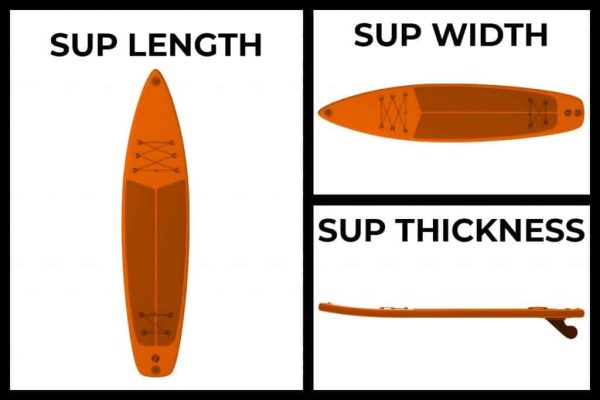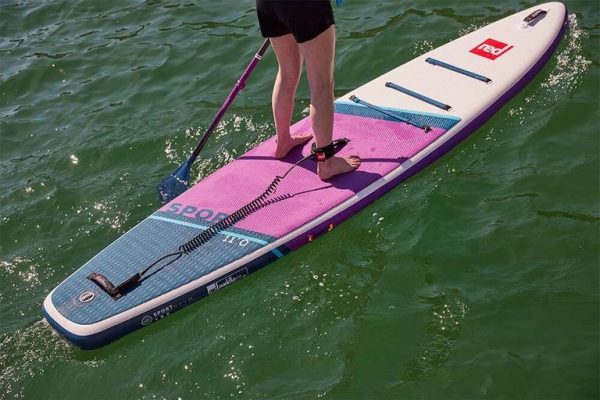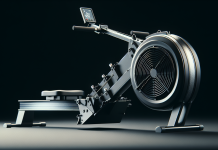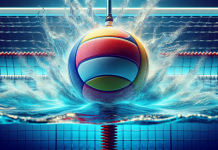In stand-up paddleboarding (SUP), one of the crucial aspects to consider when choosing a board is its thickness. A SUP board’s thickness significantly impacts its stability, buoyancy, and performance on the water.
From beginners to experienced paddlers, finding the proper thickness is essential to ensure a smooth and enjoyable paddleboarding experience.
In this article, we will explore the factors determining the ideal thickness for a SUP board, guiding you toward making an informed decision for your next paddleboarding adventure.
This image is the property of paddlecamp.com.
Review contents
The Importance of Board Thickness
Understanding the Role of Board Thickness
Regarding Stand-Up Paddle (SUP) boards, one of the most important factors is the board thickness. Board thickness is crucial in determining the board’s overall performance, stability, and balance. It directly impacts the board’s weight capacity and can significantly influence a paddler’s maneuverability on the water.
Impact on Stability and Balance
The thickness of a SUP board significantly affects its stability and balance. A thicker board generally provides more stability, making it ideal for beginner paddlers still learning to find their balance on the water. The increased thickness creates a more buoyant feel, allowing beginners to gain confidence and stability as they paddle.
On the other hand, a thinner board may be preferred for more advanced paddlers who are seeking a higher-performance board. Thinner boards are more responsive and maneuverable, allowing experienced paddlers to easily make quick turns and ride waves. However, it’s important to note that thinner boards require more excellent skill to maintain balance and stability.
Relation to Weight Capacity
Board thickness also plays a significant role in determining the weight capacity of a SUP board. Thicker boards generally have a higher weight capacity and can support heavier paddlers or additional gear. This is particularly important for those looking to go on more extended expeditions or carry equipment.
Conversely, thinner boards may have a lower weight capacity and may not be suitable for those on the heavier side or carrying a lot of gear. Paddlers should always check the weight capacity specifications provided by the manufacturer to ensure that their chosen board can safely handle their weight and any additional loads.
Influence on Performance and Maneuverability
The thickness of a SUP board directly impacts its performance and maneuverability on the water. Thicker boards provide a more stable and forgiving ride, ideal for leisurely paddling or practicing yoga on the water. These boards are often recommended for beginner paddlers or those who prefer a more relaxed experience on the water.
Thinner boards, on the other hand, offer higher performance and enhanced maneuverability. They allow experienced paddlers to navigate more challenging conditions like riding waves or participating in races. Thinner boards are generally more responsive to the slightest shift in weight distribution and provide a more dynamic paddling experience.
Factors to Consider
Paddler’s Skill Level
One of the critical factors to consider when determining the appropriate board thickness is the paddler’s skill level. Beginner paddlers typically benefit from a thicker board as it provides more stability and makes finding and maintaining balance on the water easier. Thicker boards allow beginners to build confidence and progress their skills without feeling unsafe or unstable.
Intermediate and advanced paddlers, on the other hand, may prefer a thinner board for increased performance and maneuverability. These paddlers have developed a good sense of balance and can handle the demands of a thinner board, offering more responsiveness and water control.
Intended Use of the Board
Another important consideration is the intended use of the SUP board. Different activities and environments may require different board thicknesses to optimize performance. For example, if the board is primarily used for leisurely paddling or yoga, a thicker board may be more suitable as it provides a stable platform for these activities.
On the other hand, if the board will be used for surfing or racing, a thinner board may be preferred. Thinner boards are typically more agile and responsive, allowing paddlers to navigate waves or maintain speed during races. Choosing a board’s thickness that aligns with the activities you plan to engage in most frequently is essential.
Paddler’s Weight and Size
The paddler’s weight and size play a significant role in determining the appropriate board thickness. Heavier paddlers or those carrying additional gear may require a thicker board to ensure optimal stability and weight capacity. Thicker boards are generally more buoyant and can support heavier loads without compromising balance and maneuverability.
Lighter paddlers or those with smaller frames may find thin boards more suitable, as they provide increased maneuverability and responsiveness. Thin boards require less effort to paddle and navigate, allowing smaller paddlers to enjoy a more dynamic experience on the water.
Standard SUP Board Thickness
Recommended Thickness for Beginner Paddlers
A standard thickness range of 4 to 6 inches is generally recommended for beginner paddlers. Thicker boards in this range provide ample stability for beginners, allowing them to find balance and confidently build their skills. The added buoyancy of a thicker board makes it easier for beginners to recover from potential wobbles and makes the learning curve less steep.
Thickness for Intermediate and Advanced Paddlers
Intermediate and advanced paddlers may opt for slightly thinner boards in the 4 to 5 inches range. These boards balance stability and performance, allowing more experienced paddlers to enjoy increased maneuverability without compromising too much on stability. Thinner boards in this range are suitable for those who have mastered the basics of paddling and are looking to progress their skills.
Specialized SUP Boards
Specialized SUP boards, such as those designed for racing or surfing, may have even thinner thicknesses. These boards are typically designed for experienced paddlers with advanced skills and are optimized for specific activities. Racing SUP boards, for example, may have a thickness as low as 4 inches to provide maximum speed and responsiveness.
Inflatable SUP Board Thickness
Typical Thickness Range for Inflatable SUP Boards
Inflatable SUP boards have gained significant popularity in recent years due to their portability and ease of storage. The typical thickness range for inflatable SUP boards is 4 to 6 inches, similar to their solid counterparts. Inflatable boards within this range offer good stability and balance, making them suitable for a wide range of paddlers.
Advantages and Disadvantages of Different Thicknesses
Thicker inflatable SUP boards offer added stability and weight capacity, making them ideal for beginners or those looking for a leisurely paddling experience. These boards tend to be more forgiving and offer a high buoyancy, making them easier to paddle and control.
Thinner inflatable SUP boards provide increased performance and maneuverability. These boards are preferred by more advanced paddlers who are looking for a dynamic and responsive ride. However, it’s important to note that thinner inflatable boards may sacrifice some stability in exchange for enhanced performance.
This image is the property of greenwatersports.com.
Solid SUP Board Thickness
Ideal Thickness for Solid SUP Boards
Solid SUP boards, made from epoxy or fiberglass, typically have a standard thickness range of 4 to 6 inches, similar to inflatable boards. This range provides a good balance between stability, maneuverability, and weight capacity.
Benefits of Different Thicknesses
Thicker solid SUP boards offer enhanced stability, making them suitable for beginners or those looking for a relaxed and stable paddling experience. These boards are less prone to tip over and offer a steady platform for various activities, such as fishing or yoga.
Thinner solid SUP boards are preferred by more experienced paddlers who prioritize performance and maneuverability. These boards allow quick turns and responsive paddling, making them ideal for riding waves or engaging in more challenging paddling conditions.
Other Considerations
Board Construction
In addition to thickness, the construction of the SUP board also influences its performance and durability. Boards with a solid construction, such as epoxy or fiberglass, offer a more rigid and responsive ride. Inflatable SUP boards, on the other hand, provide excellent portability and easy storage but may sacrifice some rigidity and responsiveness.
Material Used
The material used in the construction of the SUP board also affects its overall performance. Epoxy and fiberglass boards are known for their lightweight and durable nature, which balances weight and strength. Inflatable SUP boards are typically made from PVC or similar materials, which provide excellent durability and resistance to punctures.
Volume and Weight Distribution
While thickness is an important factor, it’s also essential to consider the volume and weight distribution of the SUP board. The volume of a board refers to the amount of space it displaces in water, directly impacting the board’s stability and buoyancy. Paddlers should ensure that the board’s volume aligns with their weight and skill level to guarantee optimal performance on the water.
This image is the property of www.watersportswhiz.com.
Importance of Testing and Trying Boards
Experimentation with Different Thicknesses
Finding the right SUP board thickness is a personal journey that often involves experimentation. Paddlers should try boards with different thicknesses to determine the best balance of stability, performance, and maneuverability for their needs. Renting or borrowing boards from friends or local SUP rental shops can be a great way to test different thicknesses before purchasing.
Seeking Professional Advice
If in doubt, seeking professional advice can help steer paddlers in the right direction. Knowledgeable salespeople at SUP shops or experienced instructors can provide valuable insights and recommendations based on a paddler’s skill level, intended use, weight, and other factors. Consulting with experts will ensure paddlers make an informed decision when selecting a SUP board.
Renting or Borrowing Boards
Renting or borrowing boards is an excellent way to gain hands-on experience with different thicknesses and types of SUP boards. By paddling different boards in various conditions, paddlers can better understand how different thicknesses affect their stability, maneuverability, and overall experience on the water. This experience can help paddlers make a more informed decision when purchasing their board.
Conclusion
In conclusion, the importance of board thickness in SUP cannot be overstated. The right board thickness directly impacts stability, balance, weight capacity, performance, and maneuverability. Paddlers should consider their skill level, intended use, weight, and other factors when selecting the appropriate thickness for their SUP board.
Whether choosing an inflatable or solid SUP board, experimenting with different thicknesses, seeking professional advice, and testing boards before purchasing are crucial steps in finding the perfect board for an individual’s needs.
Remember, the ultimate goal is to find a SUP board that balances stability and performance, allowing paddlers to enjoy their time on the water thoroughly.
This image is the property of cld.accentuate.io.





































